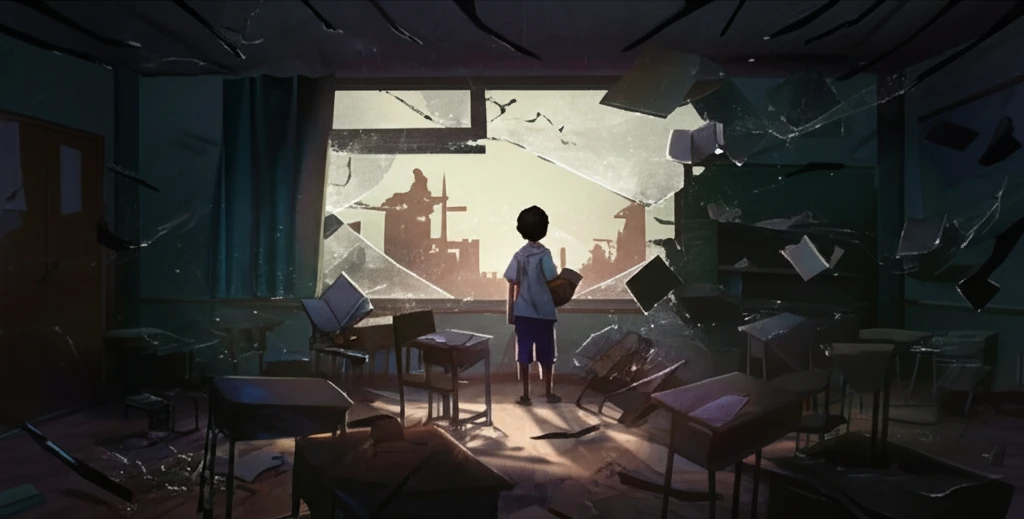
Shattered Classrooms: How Community Gun Violence Impacts Elementary School Achievement
"Unveiling the hidden link between gun violence exposure and academic struggles in young children – and what we can do to break the cycle."
In communities across America, the sound of gunfire is becoming a grimly familiar backdrop. But the impact of this violence extends far beyond the immediate tragedy, silently infiltrating classrooms and hindering the academic potential of young children. A groundbreaking study has revealed a disturbing connection: community gun violence acts as a significant social determinant, directly impacting elementary school achievement.
Imagine a third-grader struggling to focus on their reading lesson, their mind haunted by the echoes of a recent shooting in their neighborhood. This isn't just an individual struggle; it's a systemic issue, where the pervasive threat of gun violence creates an environment of fear and instability that undermines a child's ability to learn and thrive. This article explores this critical link, highlighting the research that exposes the reality of shattered classrooms and the urgent need for solutions.
We'll delve into the ways in which exposure to gun violence, even indirectly, can disrupt cognitive function, increase anxiety, and ultimately lead to lower standardized test scores. More importantly, we'll explore potential interventions and strategies that communities, schools, and families can implement to create safer, more supportive learning environments for our children. The goal is to empower readers with knowledge and actionable steps to advocate for change and help break the cycle of violence impacting our schools.
The Ripple Effect: How Gun Violence Undermines Academic Success

A study conducted in Syracuse, New York, provides compelling evidence of the relationship between community gun violence and elementary school achievement. Researchers analyzed data from the Syracuse City Police Department on incidents of gunshots fired between January 2009 and July 2015, mapping these incidents in relation to the city's 19 elementary schools. This data was then cross-referenced with third-grade standardized test scores in English Language Arts (ELA) and math. The findings were alarming: schools located within areas with higher concentrations of gunshots consistently showed significantly lower test scores.
- Lower Test Scores: Schools in high-gun violence areas showed a 50% reduction in ELA and math proficiency.
- Statistical Significance: Higher levels of gun violence correlated with higher rates of failure in both ELA and math (p < .05).
- Indirect Exposure Matters: The study emphasizes that even indirect exposure to gun violence, not just direct victimization, significantly impacts academic outcomes.
- Community-Wide Impact: Gun violence creates an environment of chronic stress that affects students' ability to concentrate and learn.
Building a Brighter Future: Solutions and Strategies
The study's authors emphasize that schools and communities need to collaborate and ensure the well-being of children. This requires a multi-pronged approach that includes increased investment in social work positions, training for teachers and staff to recognize and address trauma, and community-level interventions to prevent violence. This might involve creating safe spaces for children to express their feelings, providing access to mental health services, and implementing conflict resolution programs. By addressing the root causes of violence and providing support for affected students, we can create a more equitable and supportive learning environment for all.
